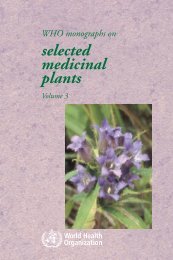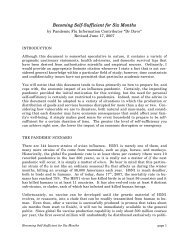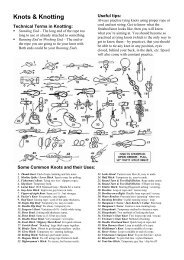Create successful ePaper yourself
Turn your PDF publications into a flip-book with our unique Google optimized e-Paper software.
Tooth Fungi<br />
GENUS Hydnum<br />
These are less common and abundant than the club fungi, to<br />
which they are related, but some of them are encountered often<br />
enough to merit inclusion here. The two species illustrated (Figures<br />
59 and 60) are so characteristic that they cannot be confused<br />
with other kinds and for this reason should be of interest<br />
and value to the beginner.<br />
<strong>Edible</strong>: HYDNUM CAPUT-URSI (Bear's Head Fungus)<br />
Figure 59. Hydnum caputursi<br />
(Bear's Head Fungus).<br />
<strong>Edible</strong>.<br />
The bear's head fungus forms<br />
white clumps from 3 to 6 inches or<br />
more in diameter, made up of hundreds<br />
of tapering teeth, each tooth<br />
being from 2 to 4 inches long.<br />
We have found only a few of<br />
these rarely beautiful plants, but in<br />
some years and in some places they<br />
are fairly common, inhabiting hardwood<br />
forests throughout most of<br />
the United States. This species<br />
probably causes some decay in living<br />
trees (the photographed specimen<br />
was found on a felled oak tree,<br />
but its beauty and edibility atone<br />
for any damage it: may do.<br />
<strong>Edible</strong>: HYDNUM CORALLOIDES (Coral Fungus)<br />
The coral fungus grows as hemispherical clumps that may be a<br />
foot across but are ordinarily from 4 to 8 inches wide. The fruit<br />
body originates from a single stem, which branches repeatedly.<br />
98
















